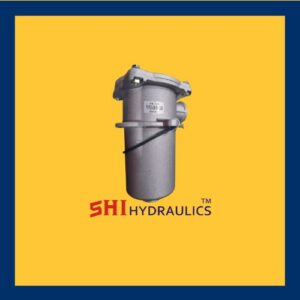Filter Element
Filter Element: The Heart of Filtration Systems
A filter element is a critical component in filtration systems designed to remove impurities, contaminants, and particulates from fluids, gases, or air. These elements are used in a wide array of industries, including automotive, aerospace, manufacturing, food and beverage, and hydraulic systems, ensuring the efficiency and longevity of machinery and processes.
What is a Filter Element?
The filter element is the replaceable part of a filtration system that performs the actual filtration. It consists of a medium or material designed to trap unwanted particles, allowing only clean fluid, air, or gas to pass through. Filter elements come in various shapes, sizes, and materials tailored to specific applications and operating conditions.
Key Components of a Filter Element
- Filter Media:
- The core material that captures contaminants.
- Common materials include paper, synthetic fibers, wire mesh, or pleated membranes.
- Media type determines the filtration efficiency and compatibility with different fluids or gases.
- Support Structure:
- Provides rigidity and durability to the filter element.
- Includes perforated metal cores, wire mesh, or plastic frames to support the filter media.
- End Caps:
- Securely seal the ends of the filter element.
- Made from metal, plastic, or composite materials, ensuring compatibility with the operating environment.
- Seal or Gasket:
- Prevents fluid bypass, ensuring that all fluid passes through the filter media.
- Commonly made from rubber, silicone, or elastomeric materials.
Types of Filter Elements
Filter elements are categorized based on their application and filtration mechanism:
- Hydraulic Filter Elements:
- Used in hydraulic systems to remove dirt, metal shavings, and other contaminants.
- Protect components like pumps, valves, and cylinders from wear and tear.
- Air Filter Elements:
- Designed to filter particulates from the air in engines, HVAC systems, or industrial applications.
- Protect machinery and improve air quality.
- Fuel Filter Elements:
- Clean fuel before it reaches the engine or equipment, preventing clogging and ensuring efficient combustion.
- Oil Filter Elements:
- Remove impurities from lubricating oils, ensuring smooth operation and reducing wear.
- Water Filter Elements:
- Eliminate sediments, chlorine, and impurities from water for drinking, industrial, or agricultural use.
- Gas Filter Elements:
- Used in gas pipelines or systems to remove particulates or moisture.
Functions and Benefits
- Contaminant Removal:
- Traps unwanted particles, extending the lifespan of machinery and systems.
- Improved Efficiency:
- Ensures clean fluid or air flow, optimizing performance.
- Reduced Maintenance Costs:
- Prevents damage to system components, minimizing repair or replacement expenses.
- Enhanced Reliability:
- Maintains consistent system performance, reducing the risk of breakdowns.
- Environmental Protection:
- Helps in reducing emissions and waste, supporting sustainability efforts.
Materials Used in Filter Elements
- Cellulose:
- Cost-effective and commonly used for basic filtration needs.
- Synthetic Fibers:
- Offer high filtration efficiency and durability.
- Metal Mesh:
- Suitable for high-pressure or high-temperature applications.
- Ceramics:
- Used for fine filtration in extreme environments.
- Activated Carbon:
- Adsorbs odors, chemicals, and impurities, often used in air or water filtration.
Applications of Filter Elements
- Automotive:
- Fuel, oil, and air filters for cars, trucks, and heavy machinery.
- Industrial:
- Filtration systems in manufacturing, power plants, and chemical processing.
- Hydraulic Systems:
- Critical in construction, agriculture, and industrial equipment.
- Food and Beverage:
- Ensures purity in water, beverages, and edible oils.
- Aerospace:
- Protects aircraft engines and hydraulic systems.
Maintenance and Replacement
Regular maintenance and timely replacement of filter elements are crucial to ensure optimal system performance. Key practices include:
- Monitoring Performance:
- Check for pressure drops or reduced efficiency, indicating a clogged filter.
- Scheduled Replacement:
- Replace filter elements based on manufacturer recommendations or operating conditions.
- Inspection:
- Regularly inspect filters for damage or wear.
- Proper Disposal:
- Dispose of used filter elements responsibly to minimize environmental impact.
₹450.00
Related Products
Related products
Customer Reviews
“A review from a customer who benefited from your product. Reviews can be a highly effective way of establishing credibility and increasing your company's reputation.”
Customer Name
“A review from a customer who benefited from your product. Reviews can be a highly effective way of establishing credibility and increasing your company's reputation.”
Customer Name






